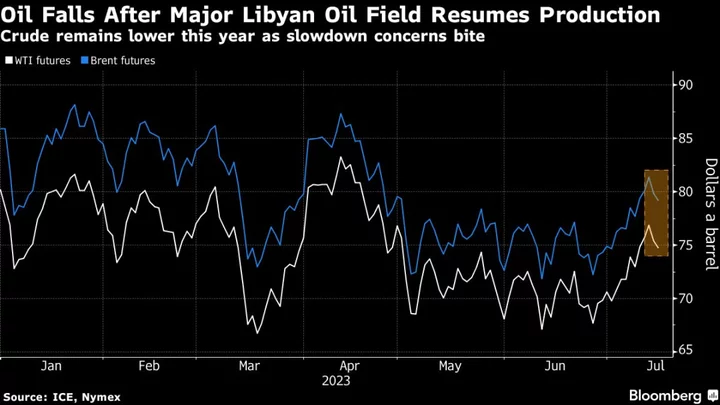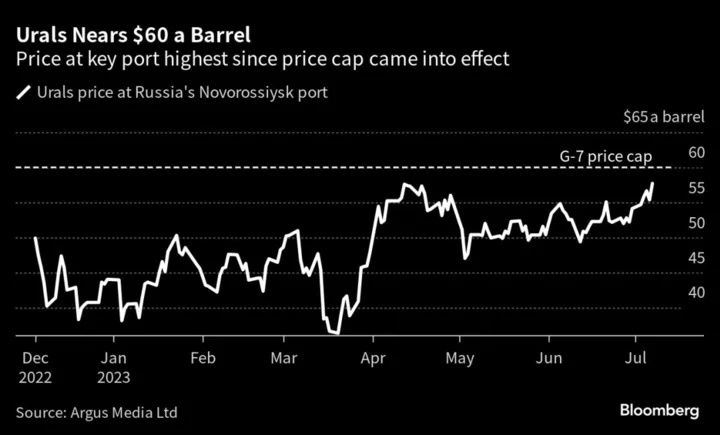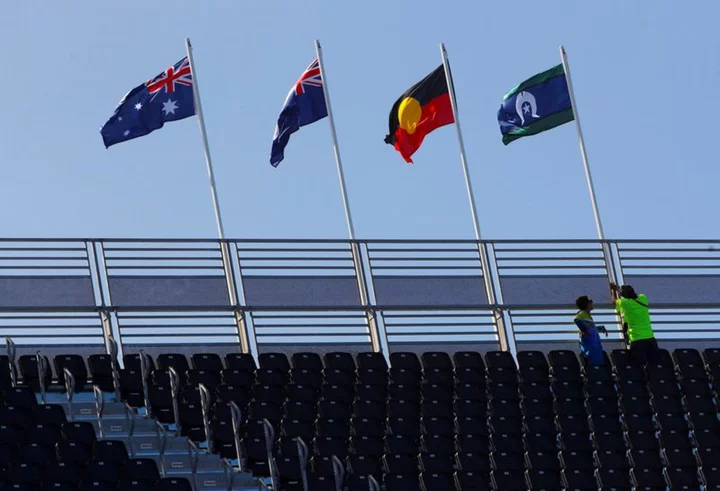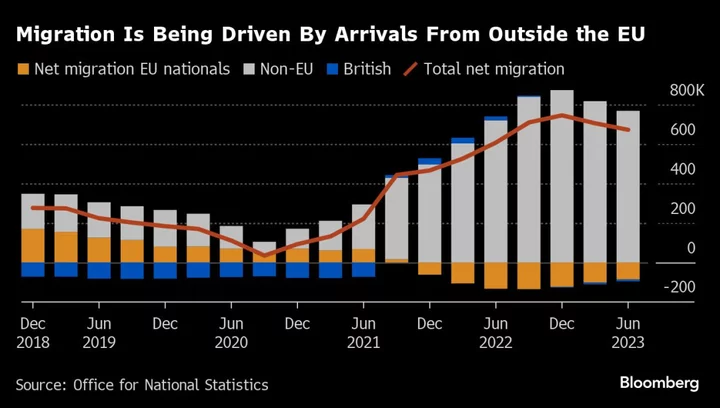Oil fell for a second day as a major Libyan field resumed output and on signs US interest rates could go higher than anticipated.
Global benchmark Brent dropped toward $79 a barrel after losing 1.8% on Friday. Production was restarting at Sharara, one of Libya’s biggest oil fields, after protesters left the site, a person familiar with the matter said. Before the disruption last week, it was producing about 250,000 to 260,000 barrels a day.
Crude has rallied over the past three weeks but remains lower this year as China’s lackluster economic recovery and the Federal Reserve’s campaign of monetary tightening weighed on demand. US central bank officials are expected to raise borrowing costs again this month, and have signaled they’re still open to further increases later in the year.
“Supply concerns eased as a Libyan oil field resumed production,” said Charu Chanana, market strategist for Saxo Capital Markets Pte. in Singapore. Also, “US consumer inflation expectations remaining anchored higher suggest risks of higher-for-longer interest rates,” underpinning demand concerns, she said.
Still, there are some signs the market is finally tightening this half, with OPEC+ heavyweights Saudi Arabia and Russia both reducing crude exports. Those curbs, along with the outages in Libya and an ongoing supply disruption in Nigeria, had helped Brent to briefly surpass $80 a barrel last week.
Oil’s recent rise has meant that the price of Urals crude exported from Russia has exceeded the $60 price cap set by the Group of Seven to curb Moscow’s oil revenue. That’s likely to add banking and shipping woes to buyers of the oil including India and China, with one protection and indemnity provider already flagging possible delays from financial and technical service providers.
To get Bloomberg’s Energy Daily newsletter direct into your inbox, click here.









